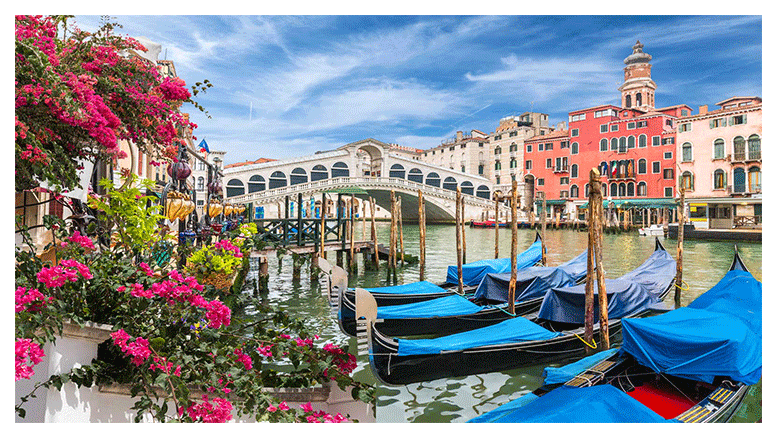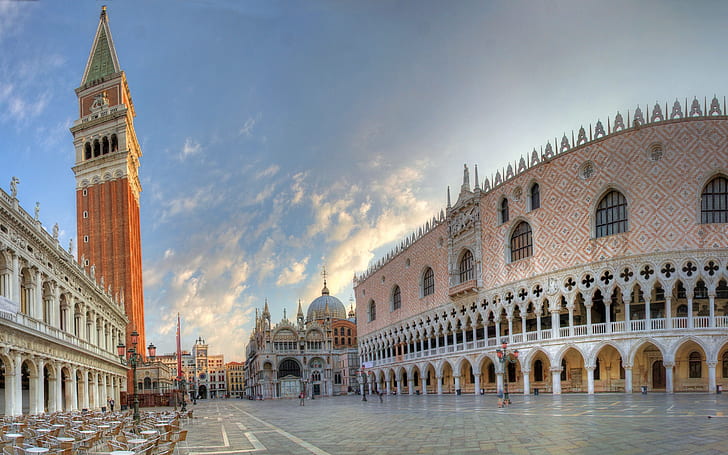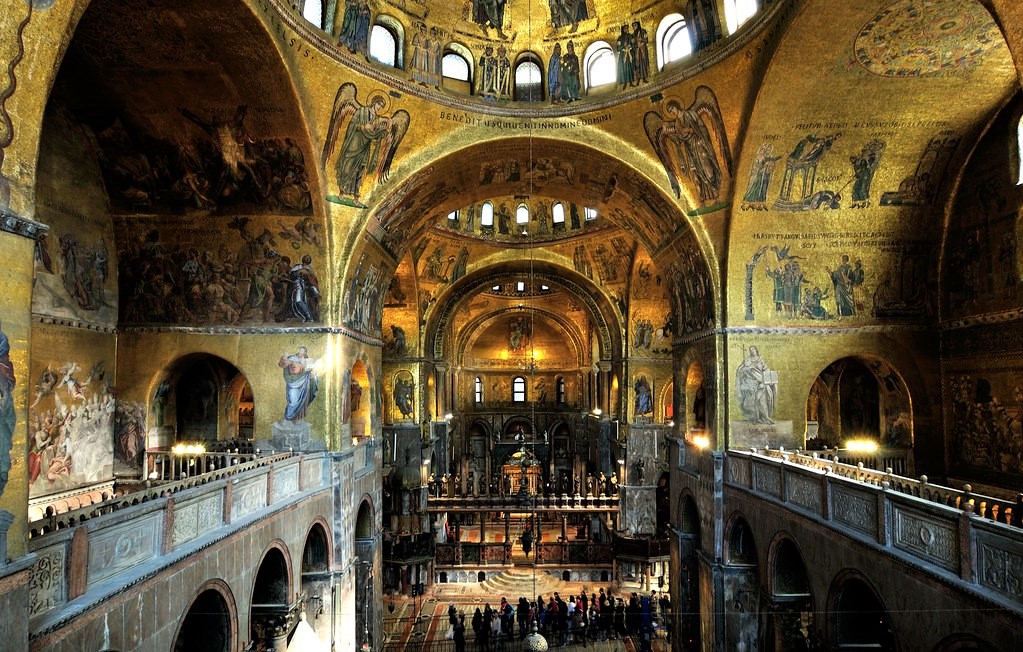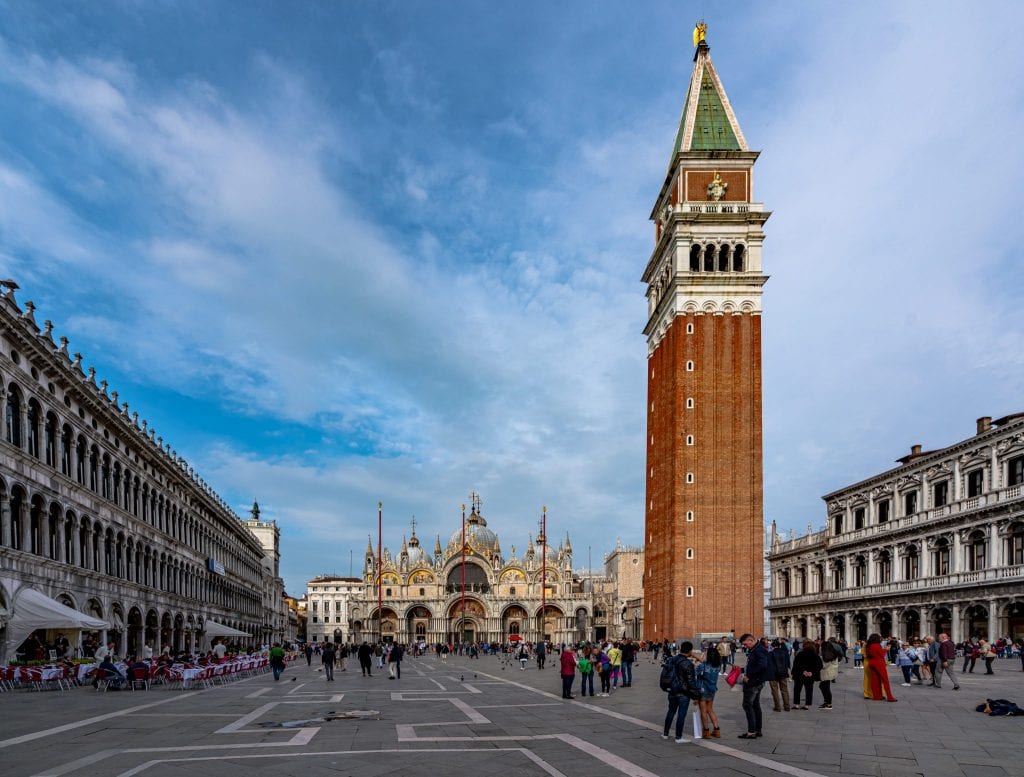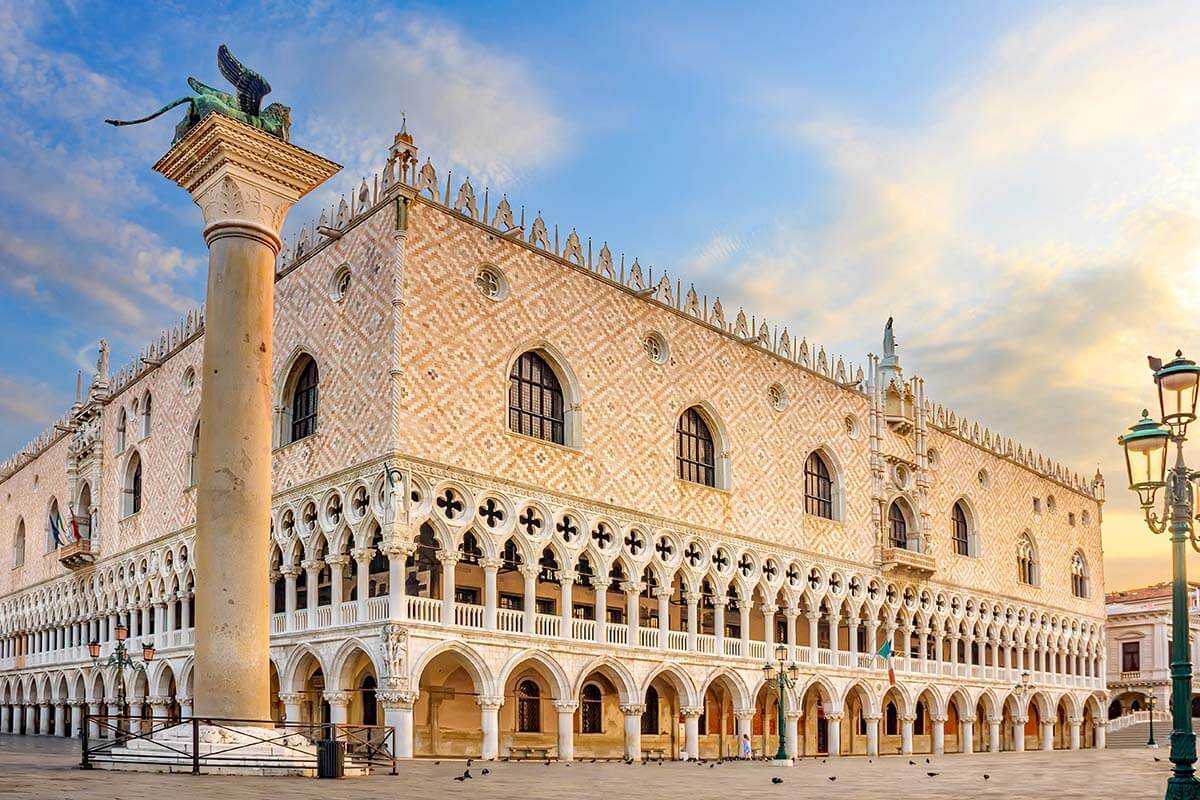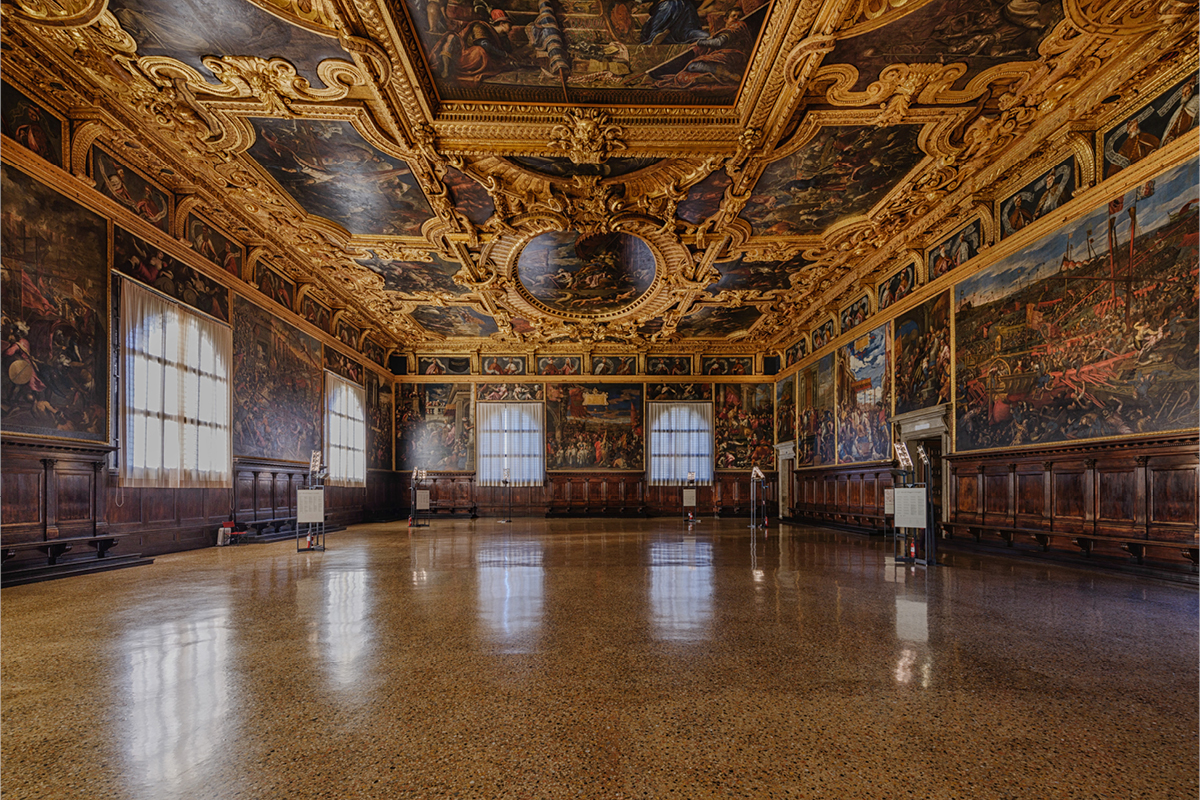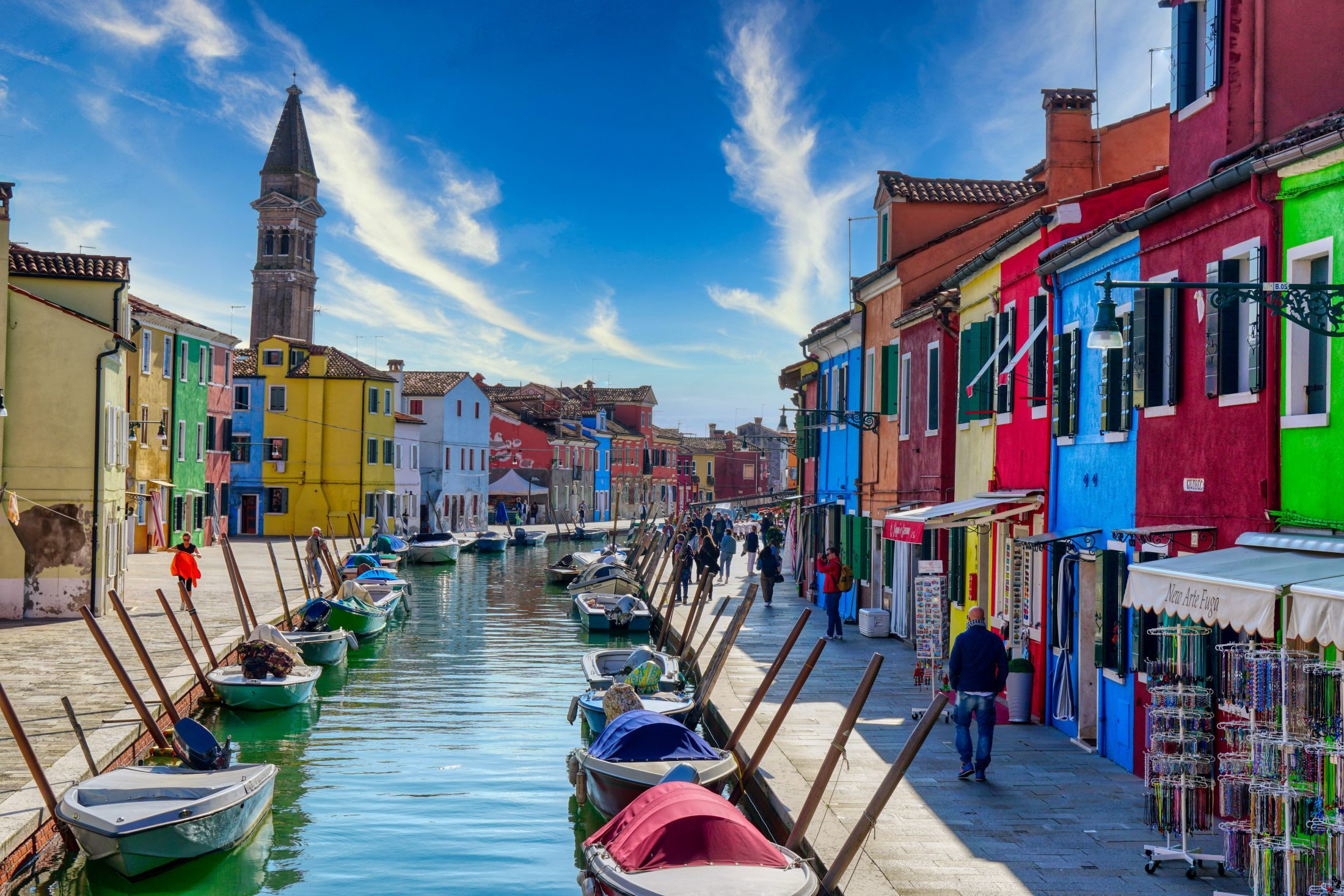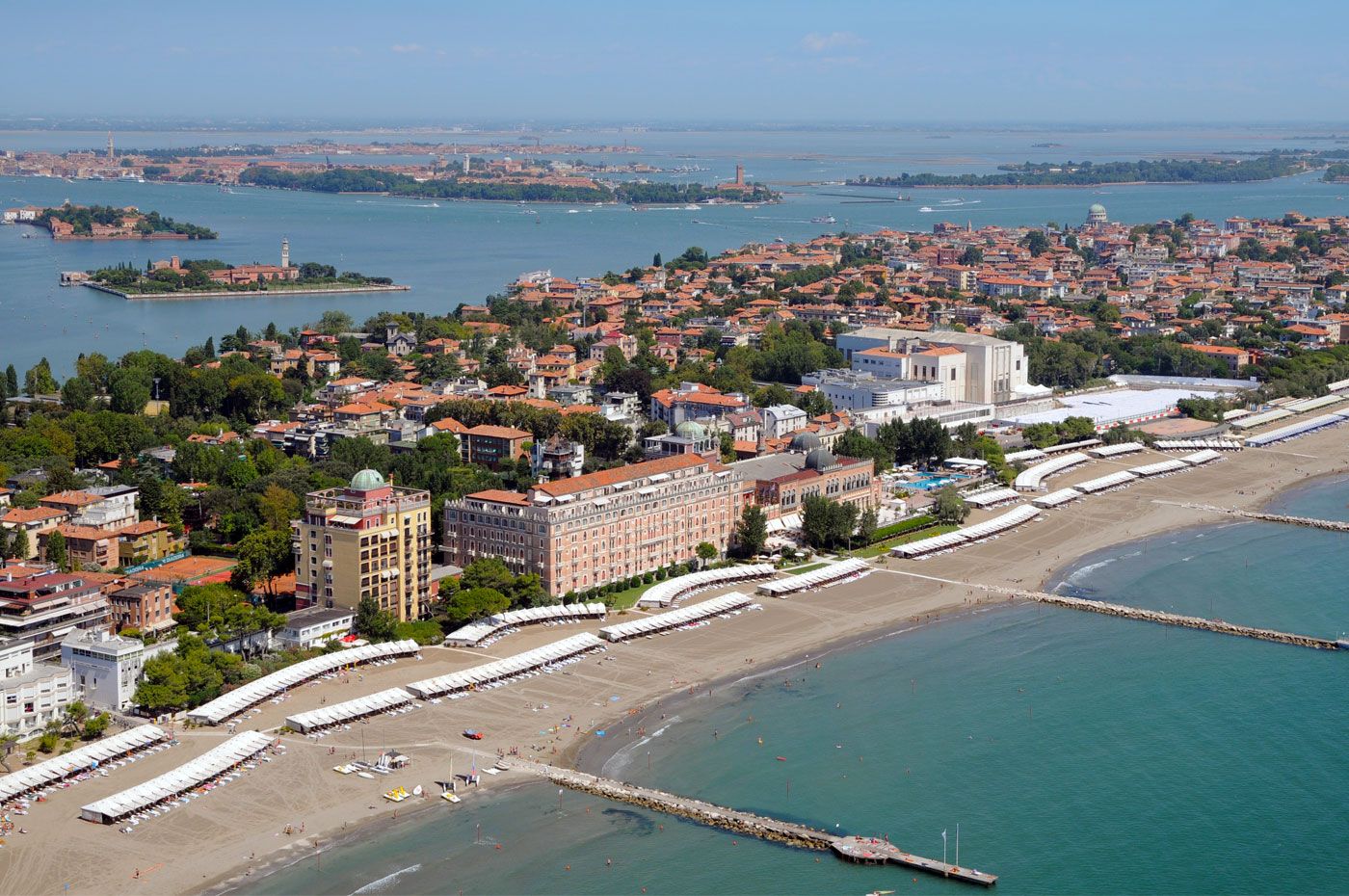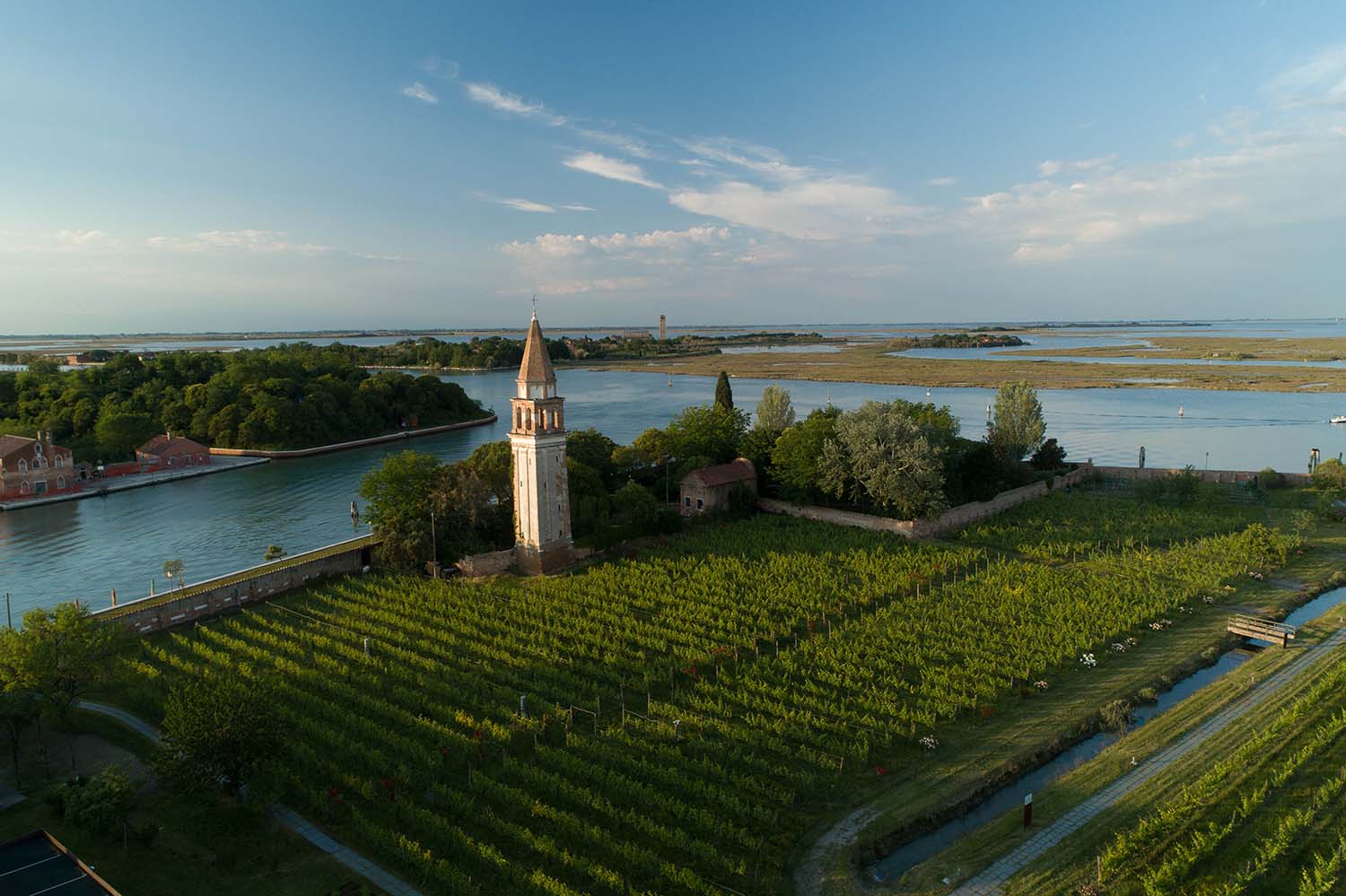Venice—also known as Venezia or Venesia—is more than a destination; it’s a dream etched in water and stone. Nestled in northeastern Italy, this captivating city is the capital of the Veneto region. It sits within the crescent-shaped Venice Lagoon, stretching from Jesolo in the north to the drained grounds near Chioggia in the south. Protected by ancient sandbanks and tidal inlets, Venice is a place where time flows as gently as its canals.
While Italy boasts iconic cities like Rome, with its imperial echoes, Milan’s pulse of fashion and innovation, and the rustic beauty of Tuscany, Venice stands singular in its spell. Often called La Serenissima, its maze of waterways, romantic gondolas, and atmospheric alleyways offers a glimpse into a world where land and sea move in harmony.
A brief history of Venice
Venice was founded in the 5th century by refugees escaping barbarian invasions, settling across marshy islets in the Venetian Lagoon. Named after the ancient Veneti people, the city evolved into a powerful maritime republic by the 9th century, thriving on trade in silk, spices, and art.
From the 13th to 17th centuries, Venice became a key player in the Crusades. It also became a cultural force during the Renaissance, influencing music, finance, and the arts. It was the first major international financial centre and remained a wealthy, independent city-state for centuries.
By the 18th century, Venice had become a highlight of the European Grand Tour, attracting artists and aristocrats. Today, its timeless charm and historical significance are preserved as a UNESCO World Heritage Site, earning it nicknames like the City of Water, Queen of the Adriatic, and City of Bridges.
Places to Visit in Venice
Travellers flock to Venice not only to admire its stunning architecture and centuries-old art but also to experience the magic of gliding through its canals on a gondola. The floating city offers something truly romantic and timeless. The best time to visit Venice is between March and October. May to July is my personal favourite—when the spring-summer mood in Italy is just perfect.
Before you drift away into the dreamy maze of canals, here are a few unforgettable things to do in Venice.
GRAND CANAL, VENICE
Venice has over a hundred canals that connect the different islands forming the city. Canale Grande, or the Grand Canal, is the largest of them all. It is a monumental waterway that runs from one side of Venice to the other, snaking through the centre in an S-shaped pattern. This canal has been a vital waterway for Venice since medieval times. It lines the canal with over 170 historical buildings dating back to the 13th century. The Grand Canal is one of the must-see places in Venice because of the exhilarating and romantic Gondola ride. In addition, you can also see the Venetian Gothic and Early Renaissance facades of the palaces that line the sides.
You can rent a gondola privately or share one with other tourists, depending on your preferences. Another option is to take the Vaporetto along the canal. The Vaporetto is the main form of transport in Venice. It is highly efficient, allowing tourists and locals to travel to the various neighbourhoods and islands around the city.
PONTE DELL’ACCADEMIA AND GALLERIE DELL’ACCADEMIA
Gallerie dell’Accademia is a museum of pre-19th-century art that boasts a fine collection featuring works by Giovanni Bellini, Canaletto, and Titian. The gallery also includes Leonardo da Vinci’s drawing of the Vitruvian Man, which rarely gets displayed due to its fragility and sensitivity to light, since it is on paper. The museum resides in an old convent building repurposed into an art gallery in the mid-to-late 1700s. Gallerie Dell’Accademia is located opposite the Ponte dell’Accademia on the Grand Canal.
There are only four bridges spanning the Grand Canal since most traffic and tourists travel along the canal instead of crossing it. The Ponte dell’Accademia is the only one that allows pedestrians to walk around to cross the Grand Canal. It is made of wood and metal bits and stands near the canal’s southern end. The Ponte dell’Accademia bridge is often a favourite of couples who enjoy the serene view.

RIALTO BRIDGE AND THE RIALTO MARKET
Ponte di Rialto, or the Rialto Bridge, is undoubtedly the most iconic and famous of the Grand Canal bridges. It was originally a wooden bridge that stood for hundreds of years until it collapsed in 1524. The incident led to the building of an ornate stone bridge that still stands today. This bridge is an important crossing point of the canal as it connects the San Marco and San Polo districts in Venice. It is an essential pedestrian thoroughfare and a top tourist attraction. Its symmetry frames the Grand Canal perfectly, and it is exquisitely detailed.
You can get the most picturesque view of gondolas and boats that stream under the bridge.
Additionally, you can find several shops on the bridge that sell different goods like jewellery and souvenirs. Rialto Market is among the best places to visit along the Grand Canal. This Market is considered one of Venice’s most popular and busiest spots in the city; most locals buy food and groceries here. There are multiple shacks, shops, libraries, and food carts at every turn, making it the perfect place to visit after a long day of sightseeing. For a wholesome experience, try buying local produce from the sellers and eating at the shacks.
Oh, if you have a thing for masks and carnivals, this is where you will find all the finest merchants.
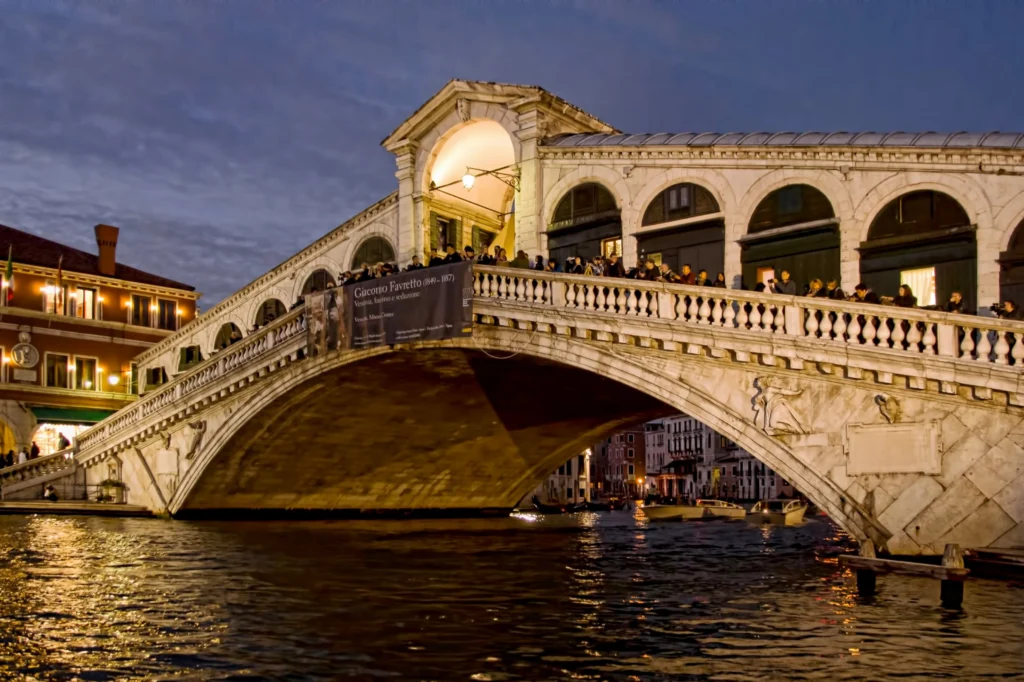

PIAZZA SAN MARCO
Often called “the world’s most beautiful drawing room,” Piazza San Marco is the heart of Venice and its most iconic square. Dating back to the 9th century and reshaped in 1177, it’s not only a cultural hub but also the city’s lowest point, making it the first to flood during Acqua Alta.
The square is home to several landmarks: St. Mark’s Basilica, one of Northern Italy’s most stunning cathedrals; the Campanile, Venice’s tallest bell tower; and the Doge’s Palace, known for its white stone facade and lavish interiors. You’ll also find the granite columns of St. Mark and St. Teodoro, once used for public executions, and the National Library of St. Mark’s, rich with historic texts.
By dusk, especially in spring or summer, live bands fill the air with music, making it the perfect time to soak in the vibrant atmosphere.
BRIDGE OF SIGHS, VENICE
Despite being a small bridge in the grand scheme of Venice, the Bridge of Sighs is one of the most viewed structures in the city. It is an important historical landmark. It was constructed in 1600 on the Rio di Palazzo and designed by the exemplary Italian architect Antonio Contino. The Bridge of Sighs is the connecting bridge between the Doge’s Palace and the New Prison.
According to legend, as criminals walked across the bridge from the Palace, they would cast one last glance at Venice and sigh, considering their forthcoming punishment and imprisonment. While visiting San Marco Square, take a glimpse of this iconic bridge.

SAN GIORGIO MAGGIORE, VENICE
The famous bell tower in Piazza San Marco has a twin tower. If you want to avoid the crowd at San Marco Square, you should head towards this smaller, separate island that does not connect to the main canals of Venice.
San Giorgio Maggiore sits a short distance from the Venice Basin and the Grand Canal, easily accessible via Vaporetto or private water taxi. On the island are the beautiful Church of San Giorgio Maggiore and the large campanile that mirrors the one in San Marco Square. Take a walk through the harbour and see the boats moored there, visit the magnificent monastery, and take the elevator to the church roof to see the Neoclassic bell tower, where you can get a 360-degree view of the island city.
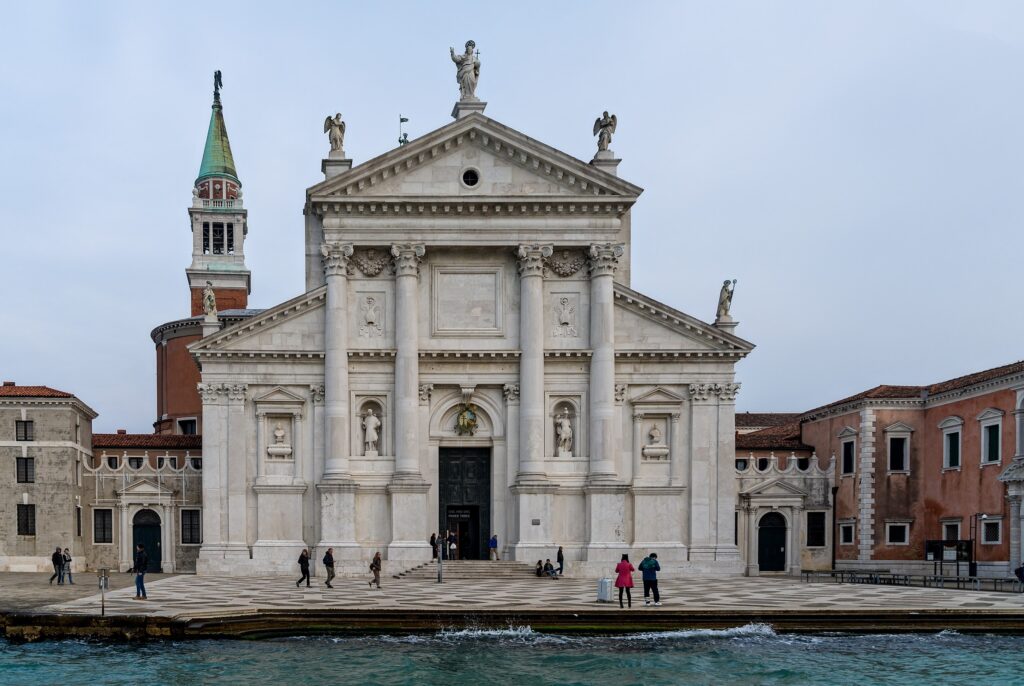
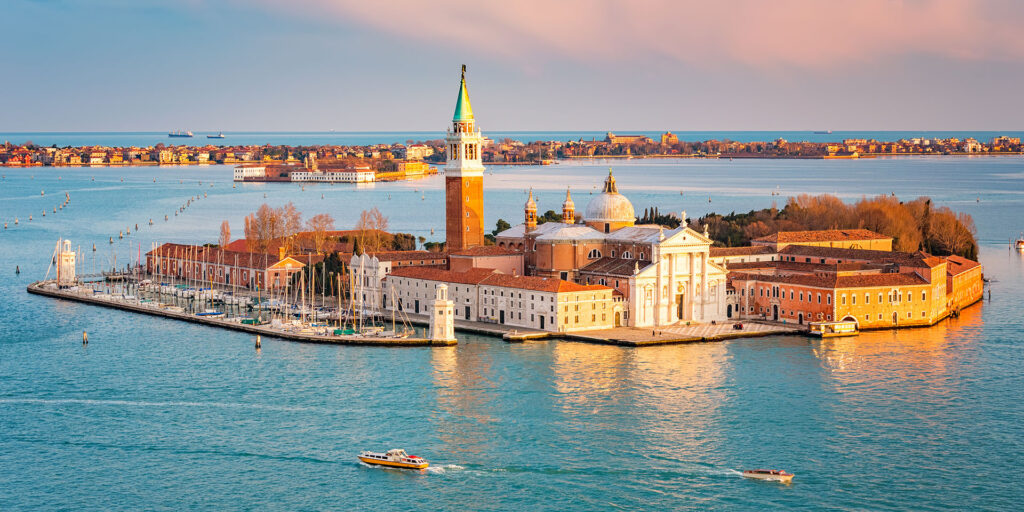
SANTA MARIA DELLA SALUTE
The Basilica di Santa Maria Della Salute, possibly the second most famous church in Venice, stands out against the surrounding architecture on the opposite side of the Grand Canal from San Marco. The Baroque-style church was completed in 1687 and is a minor basilica of the Roman Catholic Church. Located on the Grand Canal, the church has a stunning façade decorated with statues of the four apostles and the central dome towers over the skyline. Its hexagonal design provides an impression of great space while allowing light to flood in. The church has eight radiating chapels and three altars decorated with paintings of the Virgin Mary inside. Despite not being as well-decorated as other Italian churches, this basilica has heaps of symmetry and is aesthetically pleasing.
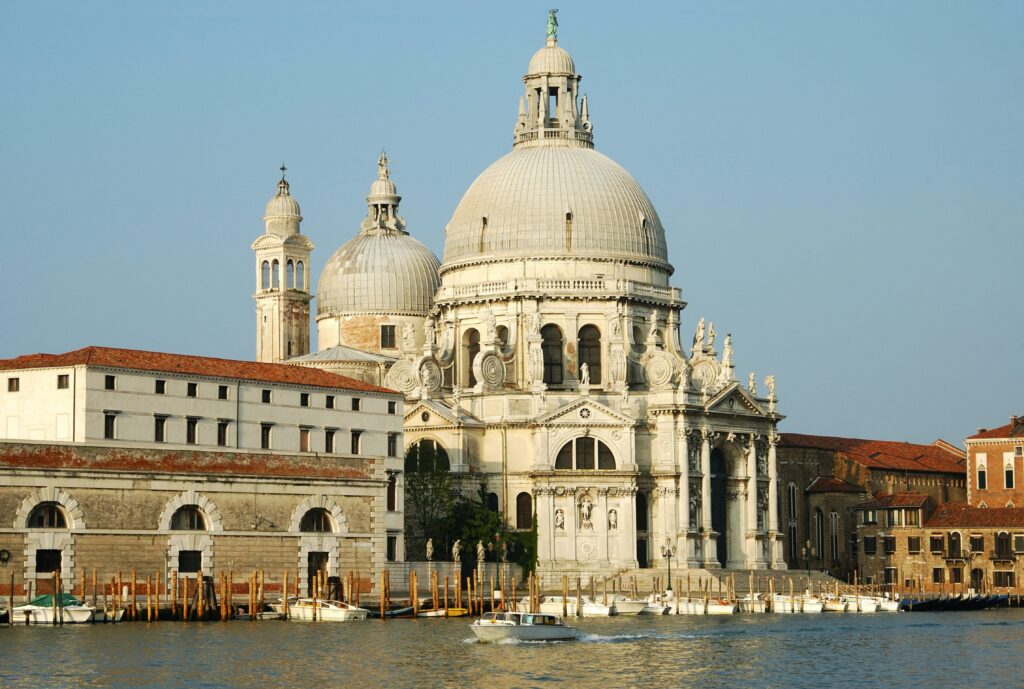

CHIESA DI SAN ZACCARIA, VENICE
The Church of San Zaccaria is a former monastic church in central Venice dating from the 15th century. It is a huge building built in Campo San Zaccaria, southeast of Piazza San Marco. San Zaccaria has an ornate facade, combining elements of Gothic and Renaissance styles, so it is undoubtedly a cathedral worth visiting for its architecture alone. However, the feature that sets this church apart from the more than two hundred others in Venice is its permanently flooded crypt. The water reflects, enhancing the solemn beauty of the flooded crypt by making the columns appear twice as long. Also, the tombs seem to float.

PONTE DI CHIODO, CANNAREGIO
There are over a hundred bridges in Venice. While they are all beautiful, they won’t give you an adrenalin rush as you cross. However, Ponte di Chiodo, one of two bridges without parapets or guard rails, is the exception. Historically, there were many such bridges in Venice. But now there is just one, called the Ponte di Chiodo, in the Cannaregio neighborhood, making it even more special for tourists. Cannaregio has a different vibe than San Marco; this area is considered a peaceful escape from the crowd. Suddenly, narrow streets with heavy traffic give way to wide canals and a relaxed pace.

VENETIAN GHETTO
The Venetian Ghetto is the next must-see place around the island city. The Venice ghetto was one of the first places in modern history to segregate people by religion. It began in the early 16th century. The estimates suggest that five thousand Jews from across Europe lived within the one-and-a-quarter acre area during its peak in the 17th century.
Here is where the term ‘ghetto’ originated, as the area was previously a foundry, referred to as a ‘getto’ in Venetian dialect. One of the darker attractions in Venice, it is worth visiting to learn more about the local history and how it has evolved.

TEATRO LÀ FENICE, VENICE
The Teatro La Fenice is an opera house where many Italian theatre companies have performed. It is one of the most beautiful opera houses in the world. La Fenice has hosted many notable opera premieres and performances by renowned composers like Rossini, Bellini, Donizetti, and Verdi. Its name is directly related to its history. It is an ownership dispute over the land where it stands that initially led to the theatre being closed. However, once the Venetian nobles regained possession of the land, they rebuilt a more lavish and majestic opera house than the one before.
This opera still stands as a testament to its resilience and remarkable ability to rise from its ashes. History has shown that the theatre has been destroyed three times, but it stands tall and proud today. No wonder Teatro La Fenice attracts tourists from around the world. Anyway, if you plan to visit the opera house, you can check their official website to see what performances are on and plan your trip accordingly.
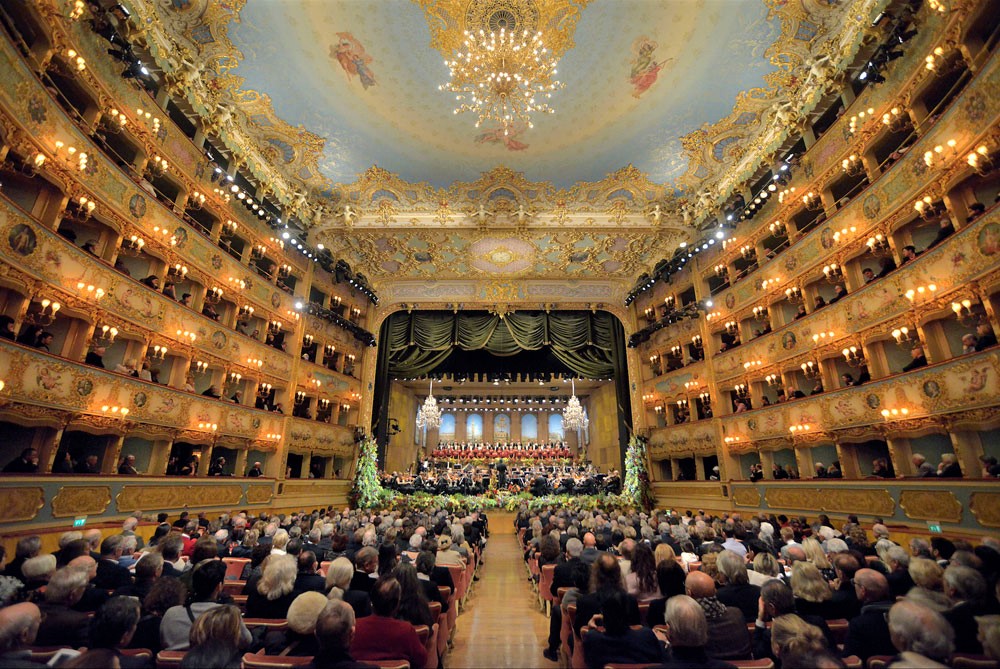
SECRET ISLANDS IN THE VENICE LAGOON
Do you know that you can experience an authentic side of Venice without the crowds? The key to seeing the magical Venice Lagoon is to venture beyond Piazza San Marco and discover smaller islands scattered throughout the swampy, marshy waterway. There is a little-known fact that Venice consists of several islands, each with a unique history and culture that would require a separate article to discuss.
Explore deeper into the world’s most iconic lagoon to discover the colourful homes of fishing families in Burano, secret vineyards in Mazzorbo, blue-water beaches in Lido, and picturesque cemeteries in San Michele, among other delights. Although I was unable to visit all of the islands, I did manage to get a brief glimpse of a few of them. I hope to experience all the islands someday and share my experience.

